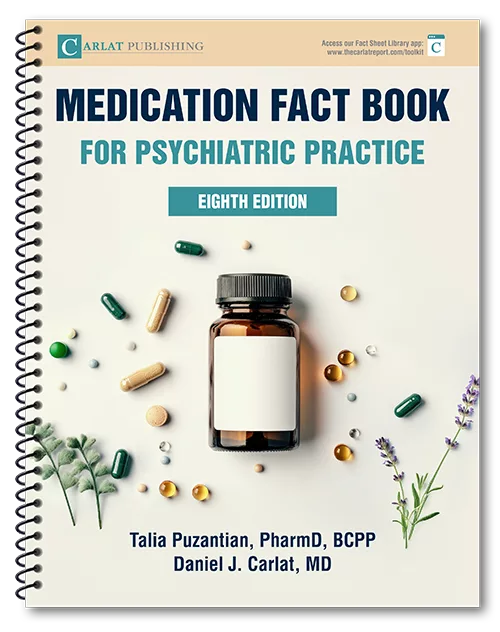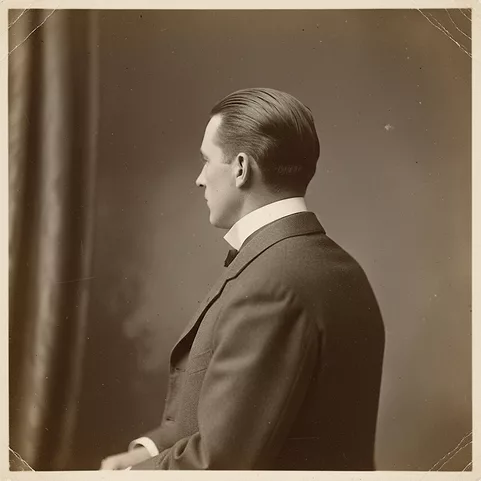Home » Transcranial Magnetic Stimulation: The Saga Continues
Transcranial Magnetic Stimulation: The Saga Continues
January 1, 2008
From The Carlat Psychiatry Report
Daniel Carlat, MD
The last time we took a close look at transcranial magnetic stimulation (TMS) was three years ago (TCPR, Jan 2005), and we concluded that it had promise as a treatment for major depression. In that article, we reported that the company making the device, Neuronetics, would apply for FDA approval as early as Fall of 2005, and that we could be passing magnetic coils over our patients’ heads as early as 2006. How things have changed. Now, there is serious doubt that TMS will ever receive FDA approval. Recently, two major studies of TMS have been published, and it is time to review the state of the art. First, in order to evaluate these studies, it’s helpful to understand some technical aspects of TMS. The basic mechanism of action of TMS involves sending pulsing magnetic fields through a metal coil that is placed close to the skull. When a magnetic field touches a source of electrons (such as our neurons), it affects those electrons in various possible ways. High frequency pulses, generally defined as 10 pulses/second (10 Hz), stimulate neural activity, while low frequency pulses (1 Hz) tend to dampen neural activity. Most studies of TMS involve stimulating the left frontal cortex – more specifically, the left dorsolateral prefrontal cortex – DLPFC. This area was chosen on the basis of functional neuroimaging studies suggesting that blood flow to the left frontal cortex is decreased in depression. As an interesting sidelight, when low frequency TMS is used to “stun” parts of the brains of schizophrenics, it tends to decrease auditory hallucinations, according to a recent meta-analysis (Aleman A et al., J Clin Psychiatry 2007;68:416-421). How is TMS actually done? The patient sits down, and the psychiatrist holds a coil over the relevant portion of the patient’s head. As with ECT, you can adjust various parameters. In the largest TMS trial, the frequency was 10 Hz, the length of each stimulation train was 40 pulses (totaling 4 seconds) and there was an “intertrain interval” of 26 sec (i.e., no magnetic pulses for 26 seconds). This pattern of 4 seconds on, 26 seconds off was repeated over and over, for a total of 3000 pulses per session, meaning that each session lasted 37.5 minutes. Sessions occurred five times per week, and in this study they went on for 4 to 6 weeks. The Big Study The TMS study everyone has been waiting for was finally published in November of 2007 (O’Reardon J, et al., Biol Psychiatry 2007;62:1208-1216). This was a multisite study, funded by Neuronetics, and it is the main study submitted to the FDA to support the approval of TMS for depression. The trial enrolled 301 patients with moderate depression, all of whom had failed to respond to at least one prior antidepressant trial (the average patient “failed” 1.6 trials). Exclusion criteria included a history of psychosis, bipolar disorder, or OCD. Once enrolled, patients were randomly assigned to either active TMS (n = 155) or sham TMS (n = 146). This double blind trial lasted for 6 weeks. The primary outcome measure was the score on the MADRS after 4 weeks. The results? Patients in the active group experienced a 5.8 point improvement in the MADRS over 4 weeks, while patients in the sham group experienced a 3.1 point improvement. This was the primary outcome measure, and the difference between the groups was almost statistically significant, but not quite (p=.057). Response rates at four weeks were 18% for TMS vs. 11% for sham (p<.05). Remission rates at 4 weeks did not differ between TMS and sham but at 6 weeks TMS pulled ahead with a remission rate of 14.2%, vs. 5.2% for sham (p<.05). Overall, these results are disappointing. While TMS did yield statistically significant improvements here or there, the amount of improvement was not robust. One way to assess the clinical significance is to compare it with average improvements in medication trials. In a meta-analysis of placebo-controlled antidepressant trials submitted to the FDA, active medications did 10% better than placebo, similar to the TMS benefit (Khan A et al., Arch Gen Psychiatry 2000;57:311-317). The problem is that in the TMS trial, response and remission rates were very low overall, probably reflecting the fact that this was a more treatment resistant population, although one might argue that 1.6 medication “failures” is not particularly treatment resistant in the grand scheme of things. Another crucial question is how durable is the TMS response? If patients relapse after acute treatment and need daily TMS, the treatment would not be popular. There is unpublished continuation data (personal communication, John O’Reardon). Patients who responded to the acute trial went into a “TMS backup” 6-month extension. This meant that they were put on an antidepressant (without TMS), and followed. If they relapsed, they were given TMS rescue. The results were fairly impressive, in that two-thirds of patients survived the 6 months without need for more TMS. Meanwhile, though, another study, this without funding from Neuronetics, assessed TMS augmentation of antidepressant treatment, and found no benefit. In this study, 127 patients with moderate to severe depression were started on antidepressants (either Effexor or Remeron) and were randomly assigned to augmentation treatment with either real TMS or sham TMS for 3 weeks. There was no difference between real or sham, with both groups posting 31% response rates (Herwig U et al., Br J Psychiatry 2007;191:441-448). Where does TMS stand with the FDA? One year ago, an FDA advisory panel recommended against approval. While they did acknowledge that TMS produces a small antidepressant effect, they felt that in comparison with ECT, it was too small to approve. Neuronetics believes that a better comparison is with standard AD treatment. We’re skeptical of this argument, since, let’s face it, taking a pill daily is much less intrusive than having to go to a clinic 5 days a week for 6 weeks for one’s daily dose of magnetism. We don’t know what the FDA will ultimately decide, since it does not necessarily go along with its advisory committees – witness the case of vagus nerve stimulation. Stay tuned.
TCPR Verdict:
TMS for depression: Approval is highly unlikely
General PsychiatryTCPR Verdict:
TMS for depression: Approval is highly unlikely
KEYWORDS brain_devices
Issue Date: January 1, 2008
Table Of Contents
Recommended
Newsletters
Please see our Terms and Conditions, Privacy Policy, Subscription Agreement, Use of Cookies, and Hardware/Software Requirements to view our website.
© 2026 Carlat Publishing, LLC and Affiliates, All Rights Reserved.


_-The-Breakthrough-Antipsychotic-That-Could-Change-Everything.webp?t=1729528747)



